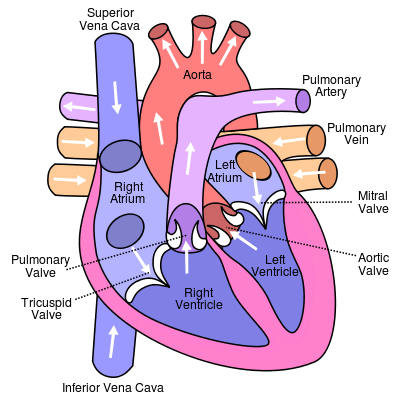Atrium
Atrium may refer to:

Atrium (architecture)
In architecture, an atrium (plural: atria or atriums) is a large open space located within a building. Atria were a common feature in Ancient Roman dwellings, providing light and ventilation to the interior. Modern atria, as developed in the late 19th and 20th centuries, are often several stories high and having a glazed roof and/or large windows, and often located immediately beyond the main entrance doors (in the lobby).
Atria are a popular design feature because they give their buildings a "feeling of space and light". The atrium has become a key feature of many buildings in recent years. Atria are popular with building users, building designers and building developers. Users like atria because they create a dynamic and stimulating interior that provides shelter from the external environment while maintaining a visual link with that environment. Designers enjoy the opportunity to create new types of spaces in buildings, and developers see atria as prestigious amenities that can increase commercial value and appeal.Fire control is an important aspect of contemporary atrium design due to criticism that poorly designed atria could allow fire to spread to a building's upper stories more quickly.

Atrium (heart)
The atrium (plural: atria) is one of the two blood collection chambers of the heart. It was previously called the auricle, but that name has now been in use as being synonymous with the right or left atrial appendage. The atrium is a chamber in which blood enters the heart, as opposed to the ventricle, where it is pushed out of the organ. It has a thin-walled structure that allows blood to return to the heart. There is at least one atrium in animals with a closed circulatory system.
The atrium receives blood as it returns to the heart to complete a circulating cycle, whereas the ventricle pumps blood out of the heart to start a new cycle.
Structure
Humans have a four-chambered heart consisting of the right atrium, left atrium, right ventricle, and left ventricle. The atria, are the two upper chambers. The right atrium receives and holds deoxygenated blood from the superior vena cava, inferior vena cava, anterior cardiac veins and smallest cardiac veins and the coronary sinus, which it then sends down to the right ventricle (through the tricuspid valve) which in turn sends it to the pulmonary artery for pulmonary circulation. The left atrium receives the oxygenated blood from the left and right pulmonary veins, which it pumps to the left ventricle (through the mitral valve) for pumping out through the aorta for systemic circulation.

Capes
Capes is a role-playing game by Tony Lower-Basch, independently published by Muse of Fire Games. It is a superhero role-playing game played in "scenes", in which players choose what character to play before each new scene. The game is a competitive storytelling game without a GM. Players create and play the villains who oppose other players' heroes.
Characters are generally co-owned, but controlled by one player at a time. Losers in conflicts can earn "story tokens" that can be used to influence the game, so it's sometimes beneficial to play a supervillain that gets beaten to get more story tokens.
The game also has a "gloating rule" that emulates situations where (for example) the villain can easily kill the heroes.
The only known module for the system is "Invasion from Earth Prime"
External links
CAPES
CAPES may refer to:
Capes may refer to :
See also
Coordenação de Aperfeicoamento de Pessoal de Nível Superior
The Coordenação de Aperfeiçoamento de Pessoal de Nível Superior (CAPES) is an organization of the Brazilian federal government under the Ministry of Education, devoted to funding and evaluating postgraduate education in the country as well as to funding Brazilian researchers during their studies at foreign institutions.
External links
References
Podcasts:

